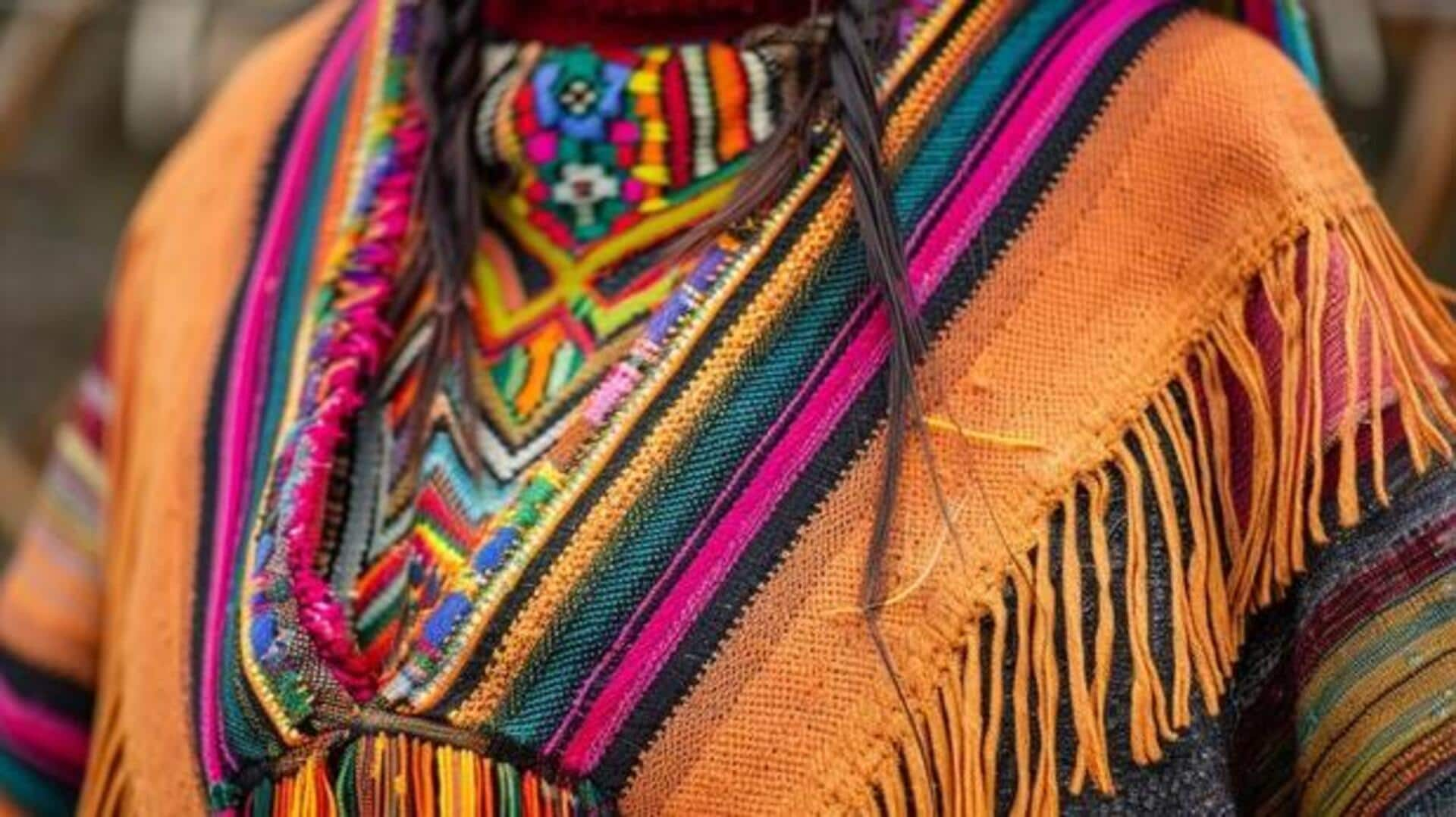
Unveiling Peruvian poncho elegance
What's the story
The Peruvian poncho, a garment steeped in history and tradition, offers more than just warmth.
Originating from the diverse cultures of Peru, this iconic attire has evolved over centuries.
Today, it stands as a symbol of cultural pride and a fashion statement worldwide.
This article explores the rich heritage of Peruvian ponchos, their key styles, and practical tips for incorporating them into modern wardrobes.
Background
The rich history behind ponchos
Peruvian ponchos date back to pre-Inca civilizations, serving both practical and ceremonial purposes.
Initially used by indigenous peoples in the Andean region to protect against harsh weather conditions, these garments have undergone significant transformations.
Each region in Peru boasts its unique design and weaving technique, making every poncho a piece of art that tells stories of cultural identity and craftsmanship.
Key concept
Key styles to know
Peruvian ponchos showcase a variety of styles, each reflecting distinct aspects of Peruvian culture.
The most common types are the brightly colored festival ponchos, worn during celebrations, and the subdued earth-toned ones for daily use.
Some regions enhance their ponchos with intricate patterns that symbolize local myths or natural elements, such as mountains and rivers, making each piece unique.
Practical advice
Wearing ponchos with modern flair
Incorporating a Peruvian poncho into contemporary fashion is simpler than it seems.
For a casual look, pair a brightly colored poncho with jeans and boots.
For something more formal or business-like, choose an earth-toned poncho over a crisp white shirt and tailored trousers.
Remember to balance the outfit's proportions by keeping other clothing items more fitted when wearing an oversized poncho.
Sustainability tip
Embracing sustainable fashion choices
Opting for authentic Peruvian-made ponchos supports local artisans and promotes sustainable fashion practices.
These garments, handcrafted using traditional techniques passed through generations, are made from eco-friendly natural fibers.
Choosing genuine pieces over mass-produced replicas contributes to preserving cultural heritage while making an environmentally conscious choice.
This approach celebrates Peru's artisanal legacy and encourages a more sustainable fashion industry.